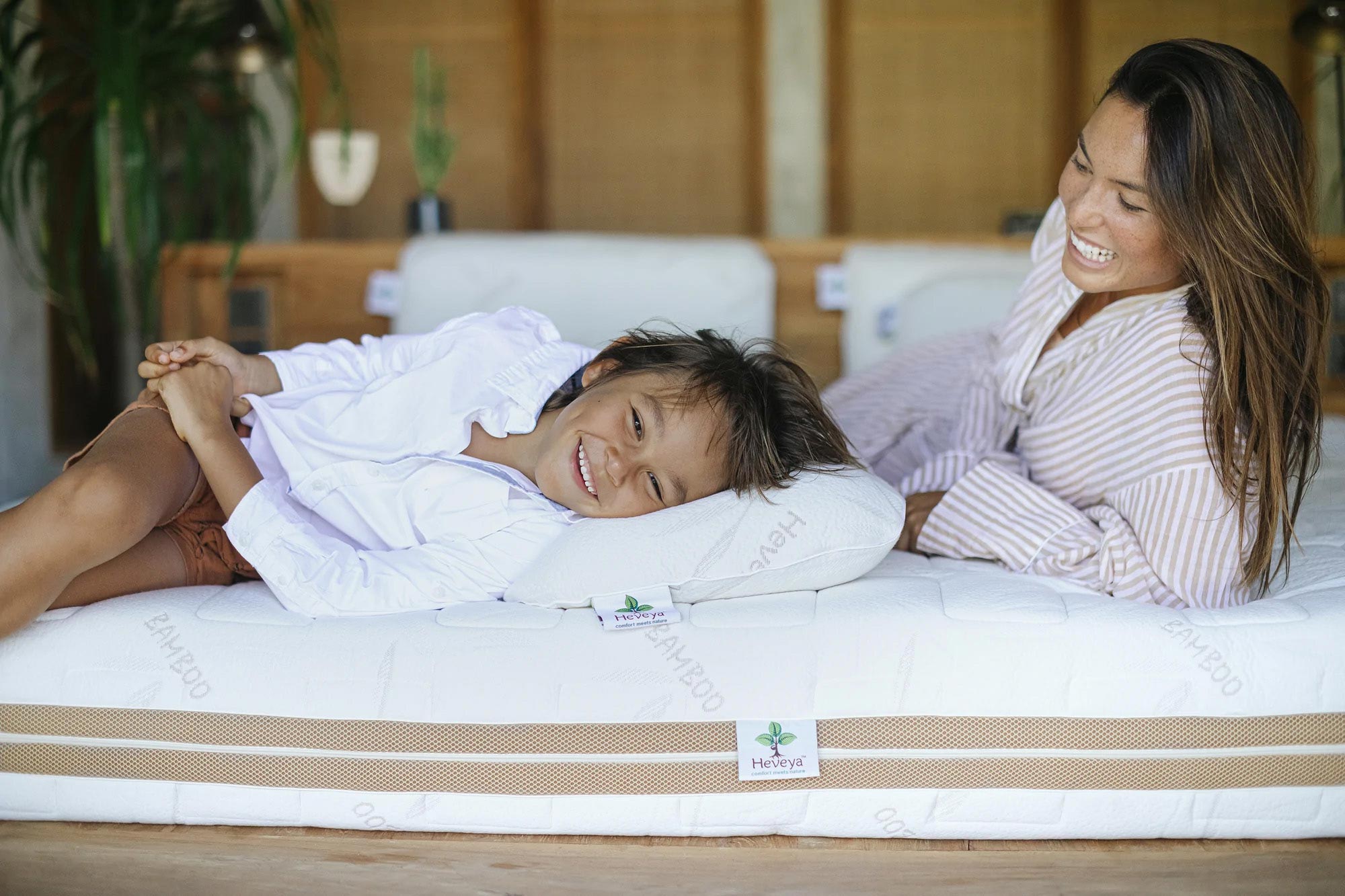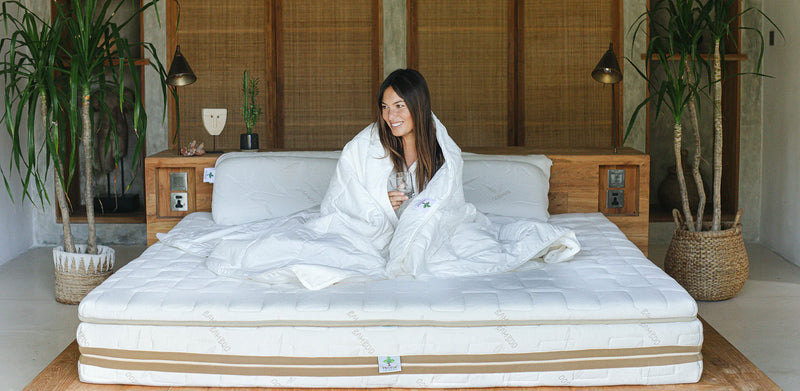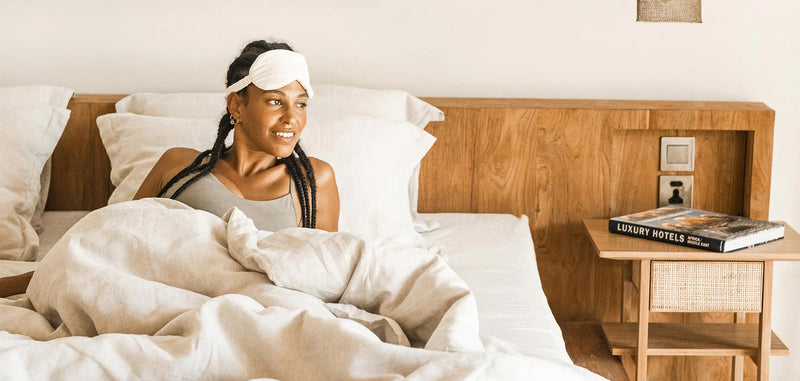Your child will spend around 12 hours a night sleeping on his or her mattress. As a parent, you'll want to ensure the mattress is not only comfortable for your child, but safe as well.
During the baby years and throughout childhood, kids are constantly growing and learning. Their sleep patterns play a big role in their development: now and for the future. Additionally, children should not be sleeping on a mattress which contains harmful synthetic chemicals. Exposure to certain chemicals can be detrimental for brain and physical development.
When you pick the best mattress for your child, you'll be setting him or her up for good health and a good future.

Size
The most popular size of mattress for a child's bed is single size. Kids are small and therefore would not require a larger bed. Also, a single size mattress leaves more space available in the child's room for playing, storage of toys and books, doing homework, or pursuing hobbies such as crafts or music.
Of course the ultimate decision of bed size is up to the parent. Some children express an interest in a larger sized bed but all too often they fail to realize how much floor space they would have to give up in their room to accommodate that.
Durability
A child's mattress will undergo a lot more wear and tear than an adult's mattress. Make sure you purchase a durable mattress which will hold up well to being jumped on, spilled on, played on, and so forth. Latex is one of the most highly durable mattresses available on the market today. If you purchase a latex mattress, make sure it comes with a removable cleanable mattress cover.
Appropriate level of firmness for joint and spine support
A good mattress for a child will be firm enough to provide proper support to the spine and joints. It is a mistake to have too soft of a mattress for your growing child. The mattress needs to be comfortable yet still sufficiently firm.
Sufficient air circulation for a cool sleep
You'll want your child to feel cool and comfortable while sleeping. In the warm and humid Singapore climate, this can be a challenge. Therefore, select a mattress which offers excellent air circulation, as this keeps your child cool through the night.
The best option in this regard is a latex mattress. Latex mattresses have pinholes interspersed periodically, which are created during the manufacturing process. Latex also has an open cell type of structure to begin with, and both features work together making it a highly breathable mattress. Your child will feel great and sleep much better on a cool mattress.

Resistance to mould and dust mites
Few mattresses are truly resistant to mould and dust mites. Yet the heat and humidity in Singapore can easily encourage mould growth. When selecting a good kid's mattress, mould resistance is an absolute must. This is not only critical for your child's health, but also saves you money as you do not need to spend extra to clean or replace a mattress which has had mould growth.
Dust mites are another problem, and anyone can develop allergies to proteins in dust mites, with unpleasant symptoms. You certainly don't want your child to have to deal with those issues, so purchase a mattress which is resistant to dust mites.
The ideal in both regards is a latex mattress, as latex is naturally resistant to mould and dust mites without the use of any added chemicals. Some other types of mattresses offer resistance to mould and dust mites through the application of harsh chemicals which can be harmful to humans in large doses. Your child's health and development is at stake here. You would not want your child to be breathing in harmful chemicals at all, and especially not for the 12 hours a night that they are sleeping.
Consideration of your child's needs and allergies
In selecting a kid's mattress, take any special needs into consideration. For example, if your child has allergies, carefully research about the material that the mattress is made of and whether it contains allergens. A latex mattress is an excellent choice as it is non-allergenic.
Other individual special needs should be factored into the type of mattress you get for your child. For example, if your child has a musculoskeletal ailment that leads to frail bones or joint pain, then you should seek a medically qualified recommendation on the best type of mattress for your child. This should come from the medical professional who sees your child on a regular basis and has a lot of experience with this medical condition - for example, an orthopaedic surgeon or physical therapist.
Natural origin
The best mattresses for kids will be of natural origin, with no extra chemicals, flame retardants, anti-dust mite chemicals or mould inhibitors. Avoid synthetic materials made of petroleum products: these tend to off-gas (produce unpleasant doors), some of which may be harmful to health. Another problem is that some synthetic mattress materials are flammable which in turn means the mattress is treated with flame retardants during manufacture: an added chemical which your child will be breathing in.
Latex is a wonderful, all-natural choice of mattress for your child. There are no concerns about added chemicals, since latex is naturally mould resistant and dust mite resistant.
Latex is also naturally springy, comfortable and resilient, so there is no need for metal springs. In contrast, innerspring mattresses can amplify electromagnetic radiation, and you would not want your child to be sleeping in a field of electromagnetic radiation. Latex contains no metal so it poses no additional risks to your child's health.
For those who are eco-conscious, there are also organic options available in latex mattresses. Many parents of young children prefer the organic option. But even the non-organic all-natural latex mattresses are much more environmentally friendly than synthetic materials such as PU foam. Latex comes from the sap of the rubber tree, and collecting this sap does not kill the tree, so plantations can be managed safely and very productively.

Comfort and sufficient sleep
The best mattress for your child will provide a superb level of comfort and sleep. Children are very active during the day and will therefore need to get sufficient rest at night. Growing and learning takes a lot of their body's resources, so the best mattresses for kids will feel soothing and relaxing to the body.
Furthermore, having a well-rested child benefits you as a parent. A greater attention span and fewer behavioural difficulties are hallmarks of a child receiving a sufficient amount of sleep. Now that's something the whole family can enjoy!
The competitive advantage for your child
The best mattresses for kids are not only comfortable, but also durable, supportive, hygienic and all-natural. Latex mattresses are ideal on all counts. In contrast, most other types of mattresses are less optimal and in some cases even harmful for your child, for example if large amounts of chemicals have been used during manufacturing.
Ensuring your child has the best mattress will also give them a competitive edge over their peers. As we learned above, a child with sufficient sleep has a better attention span. This can translate into better school performance and improved test scores.
In childhood, incremental improvements can really add up as the child grows. So give your child the best night-time rest so that your child can be at his or her best - all day long.














